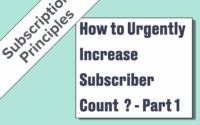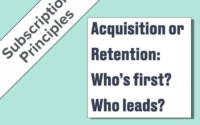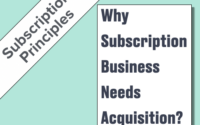Subscription Lifecycle Management – Part 2/2
In the first part of this article, we saw what the Lifecycle is and its different phases. Then, we saw the different types of tasks that can be performed during each phase.
3. Planning 🔮
Lifecycle management consists of:
- predicting the subscriber’s actions and providing an appropriate response (e.g. the subscriber wants to unsubscribe) 🔍
- predicting the actions that we would like the subscriber to do based on triggers: (e.g. updating their credit card if it is expired) 🔔
- planning a schedule based on the phase the subscriber is in (based on the number of days of subscription) 📅
- planning a schedule based on the date (e.g. Black Friday, Christmas, Back-to-school) 🎄
- avoiding any overlaps. 🚫
For example, it’s counterproductive to talk about the Black Friday promo if the product was purchased the previous day at the non-promotional price.
4. Succeed in Lifecycle management 👶🧑👴
Lifecycle management involves handling multiple calendars, responding to subscriber actions, and encouraging desired behaviors. Too much communication leads to dissatisfaction. 😤
a. Information system features
Organize audiences so each Lifecycle event can be conditional. The information system must be able to take into account:
- The number of days of subscription used and remaining 📆
- The tenure
- The number of communications received and their nature (service message or marketing message)
- The maximum number of communications over a period of time 📩 📩 📩
- The presence of triggering events
- The priority rules
The information system must integrate the ability to test different messages (A/B Testing) in order to find the most suitable schedule for its business. 🧪
b. Lifecycles for annual and monthly subscriptions
For monthly renewals, manage the Lifecycle considering tenure and assuming future renewals. This way, it will be possible to align the management of the monthly Lifecycle with the annual one. 📅
c. The Win-back phase
When the subscription is over, the rules (due to regulation) of communication with the ex-subscriber change in terms of content and frequency. For consistency reason, it may be better to treat the win-back as a separate activity and not a 6th phase. 🔄
📌 Key takeaways 📌
- The Lifecycle is the set of interactions between the subscriber and the merchant from acquisition to renewal. 🔄
- Lifecycle management is the art of prioritizing different types of actions (monetization, engagement, usage, etc.) aimed at fostering renewal. 💡
- Successful Lifecycle management requires an information system capable of managing audiences, priorities and reporting. 🖥️



